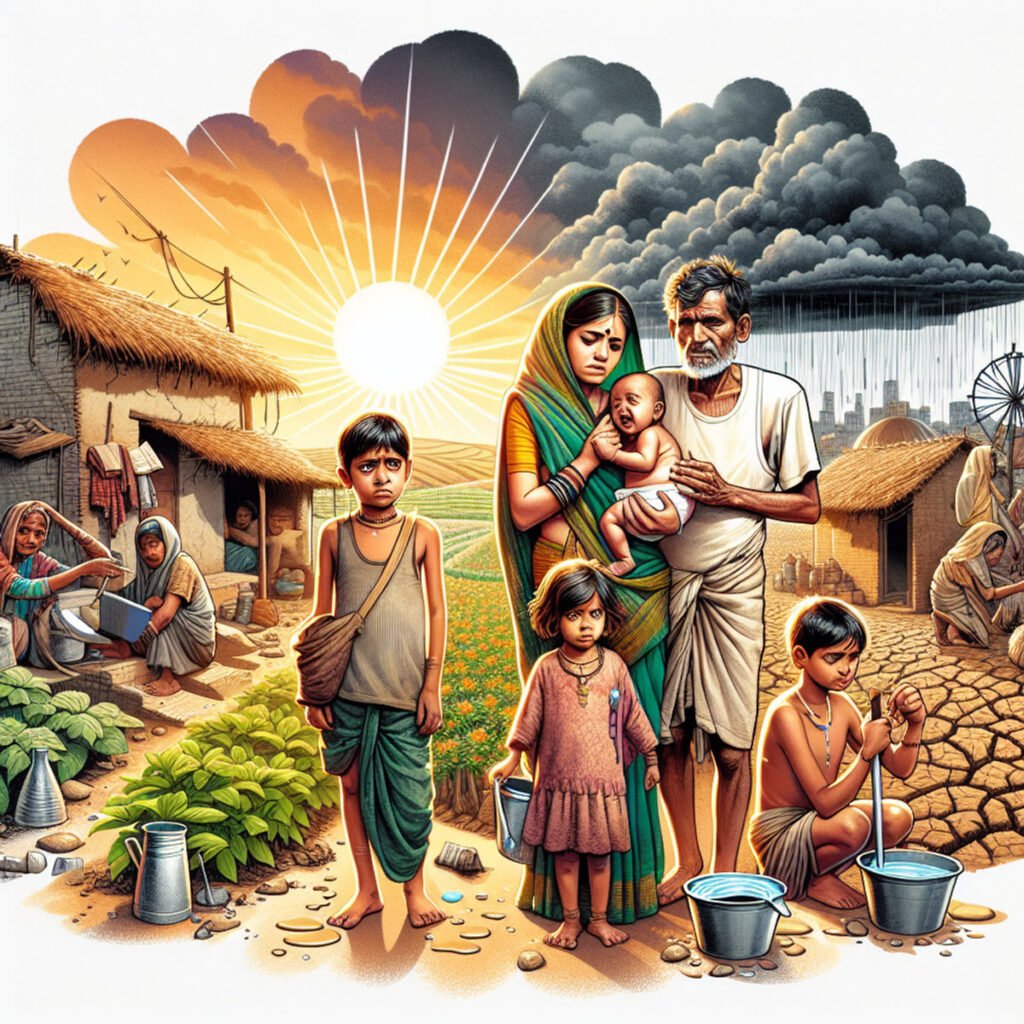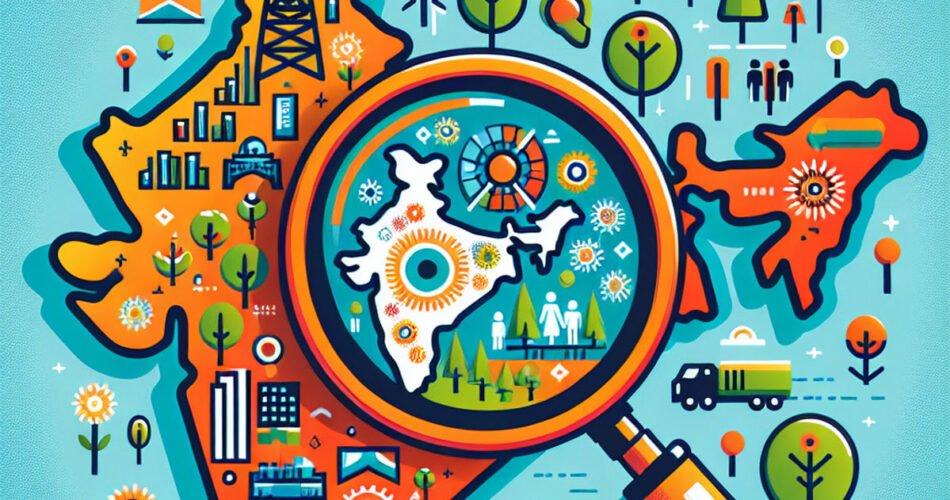Introduction: Population Explosion in India
Since gaining independence, India’s population has surged rapidly. Between 1951 and 1961, it increased by 2 lakh, marking a growth rate of 21.6 percent, deemed a population explosion. This trend has persisted, with growth rates reaching 24.8 percent in 1971-81, 23.8 percent in 1981-91, and 21.34 percent in 1991-2001. By 2001, India’s population reached 102.90 crores, and by 2011, it soared to 121.05 crores. Projections suggest it could reach 136 crores by 2021. Thus, India grapples with the formidable challenge of rapid population growth.
Read More: Demographic Features of Indian Population

Causes of Population Explosion in India
India, known for its rich cultural heritage and diverse landscapes, grapples with a significant demographic challenge: population explosion. This phenomenon, characterized by a rapid and uncontrolled increase in population size, poses profound socio-economic and environmental implications. Exploring the root causes behind India’s population surge is crucial for devising effective strategies to address this pressing issue.
Read More: How Economic Growth has Damaged the Environment?
Causes of Population Explosion in India
- High Birth Rate: One of the primary drivers of India’s population explosion is high fertility rates. Despite advancements in healthcare and family planning, cultural and socio-economic factors influence family size preferences, particularly in rural areas. Traditional beliefs and limited access to contraceptives perpetuate large family sizes, contributing to population growth.
- Decline in Death Rate: Progress in healthcare infrastructure and medical innovations has resulted in a notable decline in mortality rates, notably in infant mortality. However, this positive trend inadvertently contributes to population growth by extending life expectancy and reproductive years.
- Socio-Economic Factors: Poverty, illiteracy, and lack of employment opportunities also contribute to the population explosion. Poverty-stricken families view children as a source of labor and potential income earners, leading to higher fertility rates. Limited access to education, especially among women, exacerbates the issue.
- Immigrants and Migration: Rural-to-urban migration, driven by better employment opportunities, strain urban infrastructure and resources. Overcrowding, unemployment, and increased demand for services result from this influx, contributing to population concentration in urban centers.
- Cultural and Religious Factors: Cultural and religious beliefs attached to large families contribute to population growth. In many communities, having numerous children symbolizes prosperity and social status, perpetuating the cycle of population growth.
Conclusion
Population explosion in India is a complex issue driven by various socio-economic, cultural, and demographic factors. Addressing this challenge requires a comprehensive approach, including family planning initiatives, investments in education and healthcare, poverty alleviation strategies, and women empowerment. By tackling the root causes of population growth, India can pave the way for sustainable development and a better future.
Read More: Problem of Poverty in India

Solution of Population Problem in India
The solution to the population explosion in India is based on two basic elements:
- Decline in the Growth Rate of Population
- Promoting Economic Development
Read More: Economic Policy Changes in India since 1991
1. Decline in the Growth Rate of Population
a) Elevated death rates are indicative of poverty and backwardness within a country, leading to significant resource depletion. Therefore, efforts should focus on reducing mortality rates to curtail population growth. b) Encouragingly, there should be fewer births. Initiatives aimed at decreasing birth rates constitute a vital aspect of population policy. To achieve this, the following measures should be implemented:
- Delayed Marriage: The minimum age of marriage should be raised, with marriages ideally occurring around the age of 26. This strategy reduces the reproductive period for women, consequently decreasing birth rates. The government has already increased the minimum marriage age for men to 21 years and for women to 18 years.
- Self-Restraint: Renowned scholars like Malthus and Mahatma Gandhi advocate for self-restraint as the most effective measure to control population growth. This approach is rooted in moral principles and can significantly contribute to reducing birth rates.
- Promotion of Education: Enhanced education opportunities should be made accessible to all, as education fosters awareness about the importance of birth rate reduction. Educated individuals are more likely to adopt popular family planning methods.
- Urbanization: Encouraging rural populations to migrate to urban areas can help lower birth rates, as urban dwellers typically have smaller families compared to their rural counterparts.
- Empowerment of Women: Women empowerment initiatives, including increased access to education and employment opportunities, are essential. Financially independent women tend to marry later and prefer smaller families.
- Provision of Recreational Facilities: Offering recreational activities such as cinema, sports, and cultural events can divert attention from procreation and contribute to reducing birth rates.
- Social Ideology Shift: Societal norms should evolve to promote the concept of smaller families and gender equality. The stigma around remaining unmarried or having fewer children should be eliminated.
- Social Security Measures: Providing robust social security benefits, such as old age homes and pensions, can reduce dependence on children for support during old age or illness, consequently lowering birth rates.
- Infant Mortality Rate Reduction: Efforts to decrease infant mortality rates can instill confidence in parents regarding their children’s safety, leading to smaller family sizes.
- Family Planning: Encouraging family planning methods empowers individuals to regulate their family size. Promoting affordable and accessible birth control measures is crucial for the success of family planning initiatives.
- Adoption: Encouraging childless parents to adopt orphaned children addresses the needs of both the children and the parents, mitigating the need for biological reproduction.
- Public Awareness Campaigns: Publicity campaigns should highlight the adverse effects of overpopulation and the importance of family planning. Television, newspapers, radio, and other media platforms can be utilized to spread awareness and incentivize small family sizes.

2. Promoting Economic Development
To address the qualitative aspects of its population, economic development is imperative for the country. This enables the proper nourishment of the vast majority. Full utilization of natural resources is essential for economic progress. Adopting new production methods in the public sector and providing workers with training in artisanal skills are crucial steps. India has implemented various schemes aimed at boosting economic development, resulting in significant increases in national income and production. Economists suggest that this marks the initial stage of population control, with the potential to lower birth rates in the subsequent stage.
FAQ on Population Explosion in India: Causes and Sustainable Solutions
What is a Population Explosion?
Population explosion refers to a rapid and unsustainable increase in the size of a population, typically occurring when the birth rate surpasses the death rate. This phenomenon often leads to overcrowding, strain on resources, environmental degradation, and socio-economic challenges within a given area or country.
What are the Causes of Population Explosion in India?
1. High Birth Rate
2. Decline in Death Rate
3. Socio-Economic Factors
4. Immigrants and Migration
5. Cultural and Religious Factors
What is the Solution of the Population Problem in India?
The solution to the population explosion in India is based on two basic elements:
1. Decline in the Growth Rate of Population
2. Promoting Economic Development
What is the Birth Rate?
The birth rate, also known as the crude birth rate, is a measure of the number of live births occurring in a population within a specified time period, usually expressed per 1,000 individuals per year. It indicates the fertility level of a population and is a crucial demographic indicator used in studying population dynamics and trends.
What is the Death Rate?
The death rate, also known as the mortality rate, is a measure of the number of deaths per unit of population in a specified time period, usually expressed per 1,000 individuals per year. It provides insight into the prevalence of mortality within a population and is a key demographic indicator used in assessing public health and healthcare systems.

